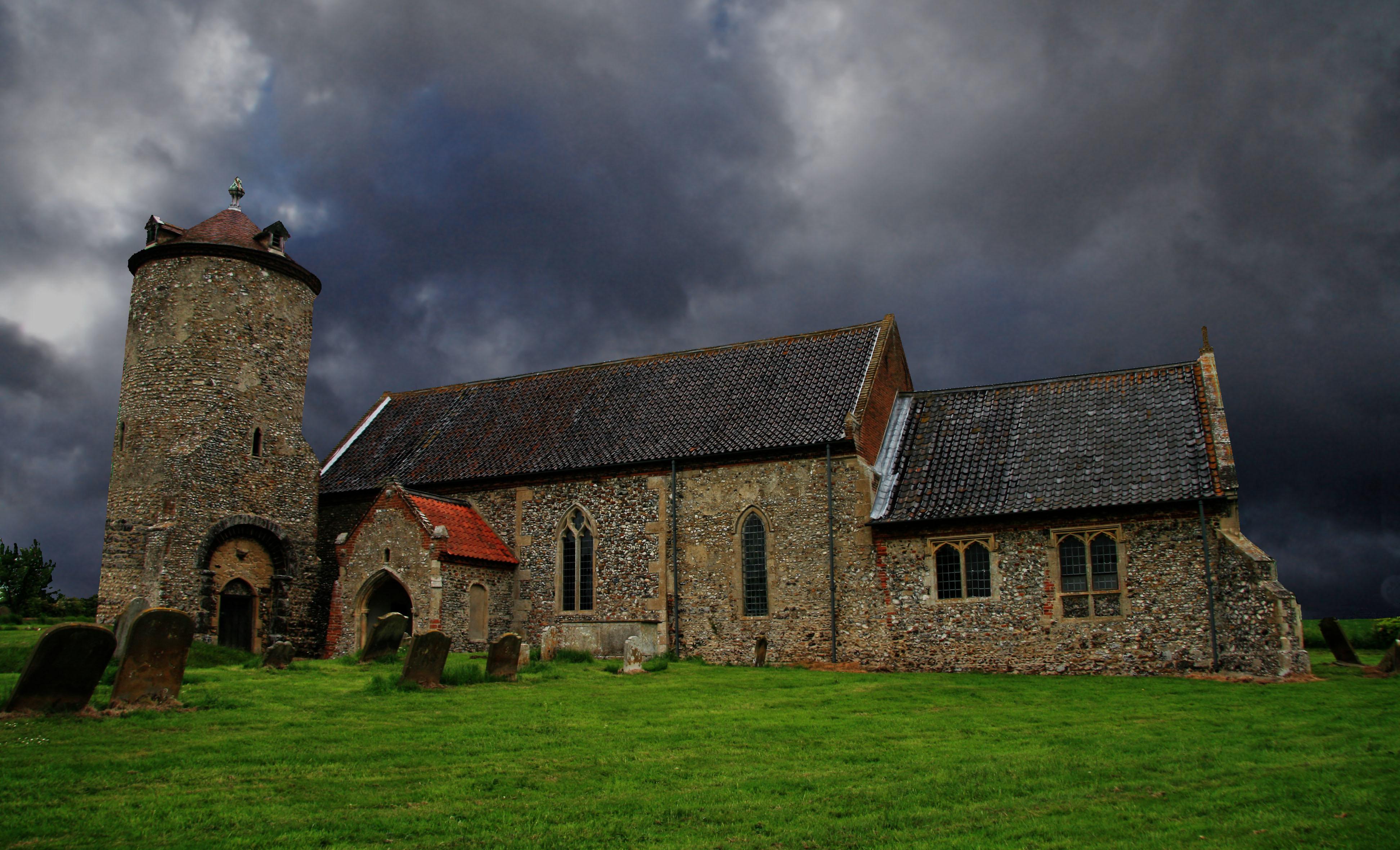St Mary
Great Snoring, Norfolk
Although Great Snoring is actually smaller than Little Snoring, its church is bigger and less rustic, reminding us quietly that it was once grander.

Ancient and quietly awe inspiring in its simplicity; the remote location, the silence inside, the slight smell of damp and the obvious centuries of use speak of a village that has retained its identity for many generations.
Little Snoring, Norfolk
St Andrew is remarkable for having a tower that is detached from the rest of the church. The two sit together on a mound above the road. The round tower of this, and many East Anglian churches was the natural result of having to build with the only local stone available, flint, and the difficulty of producing strong corners. It is topped by a little 18th century conical cap with tiny gables and a spike.
Little Snoring and Bramfield, near Southwold in Suffolk, are the only churches in England with detached round towers. Curiously, in both, the existing church lies to the northeast of the tower, both are some seven to eight miles from the sea, and both are dedicated to St Andrew.
The unique south doorway consists of three arches. The innermost is a plain Norman round arch, then the stones of what had been a broad round arch were reassembled to produce a narrow, sharply pointed arch with a lion's head at the apex.
The font with its round bowl decorated with foliage and set on four pilasters round a shaft, is Norman and of much interest. There is a rare coat of arms of James II reign, with splendid rampant lion and unicorn and the date 1686.
A plaque on the south side of the nave records that the Royal Air Force used the church in 1944 and 1945. Awards boards fixed at the west end were placed here when the Officer’s Mess was demolished.
The mahogany pulpit with fluted pilasters dates from about 1780. Mahogany from Jamaica had been imported into England from about 1720. The wide arch between the nave and the chancel dates from about 1250.
The windows cover a most interesting and wide period. The east window is Early English from around 1250
On the outside of the south wall of the chancel there are the remains of a ‘scratch dial’. These ancient sundials were used to tell the times of Mass.
The south side of the graveyard has been largely cleared of headstones, but there are some fine 18th and 18th century ones that line the path.
Great Snoring, Norfolk
Although Great Snoring is actually smaller than Little Snoring, its church is bigger and less rustic, reminding us quietly that it was once grander.
Thursford, Norfolk
A surprisingly successful merging of 13th century and Victorian architecture, decorated with fine examples of 19th century stained glass.
Great Walsingham, Norfolk
Great Walshingham is much smaller than its neighbour Little Walshingham, which gets all the attention because of the shrine and other buildings associated with Our Lady of Walshingham.